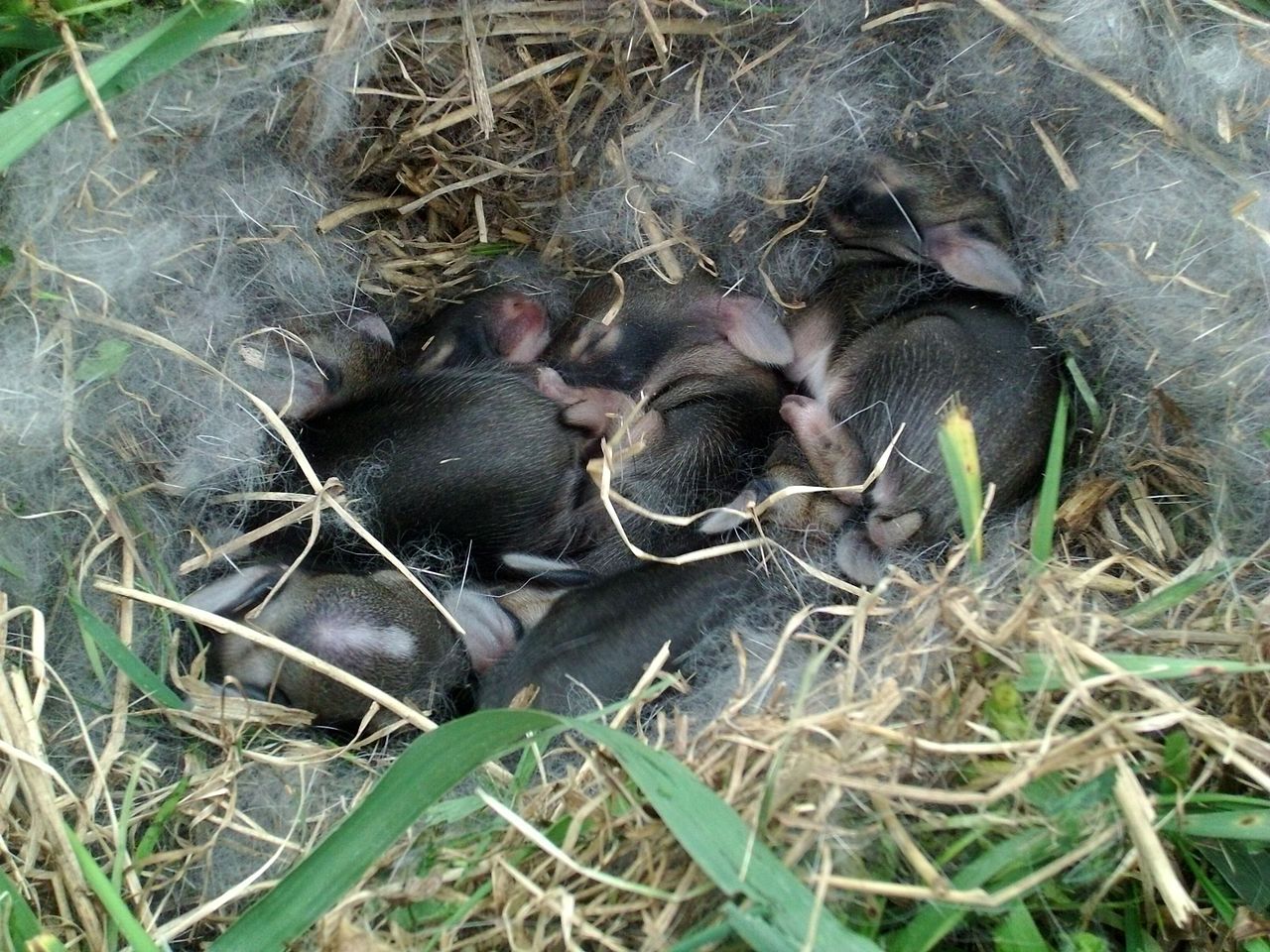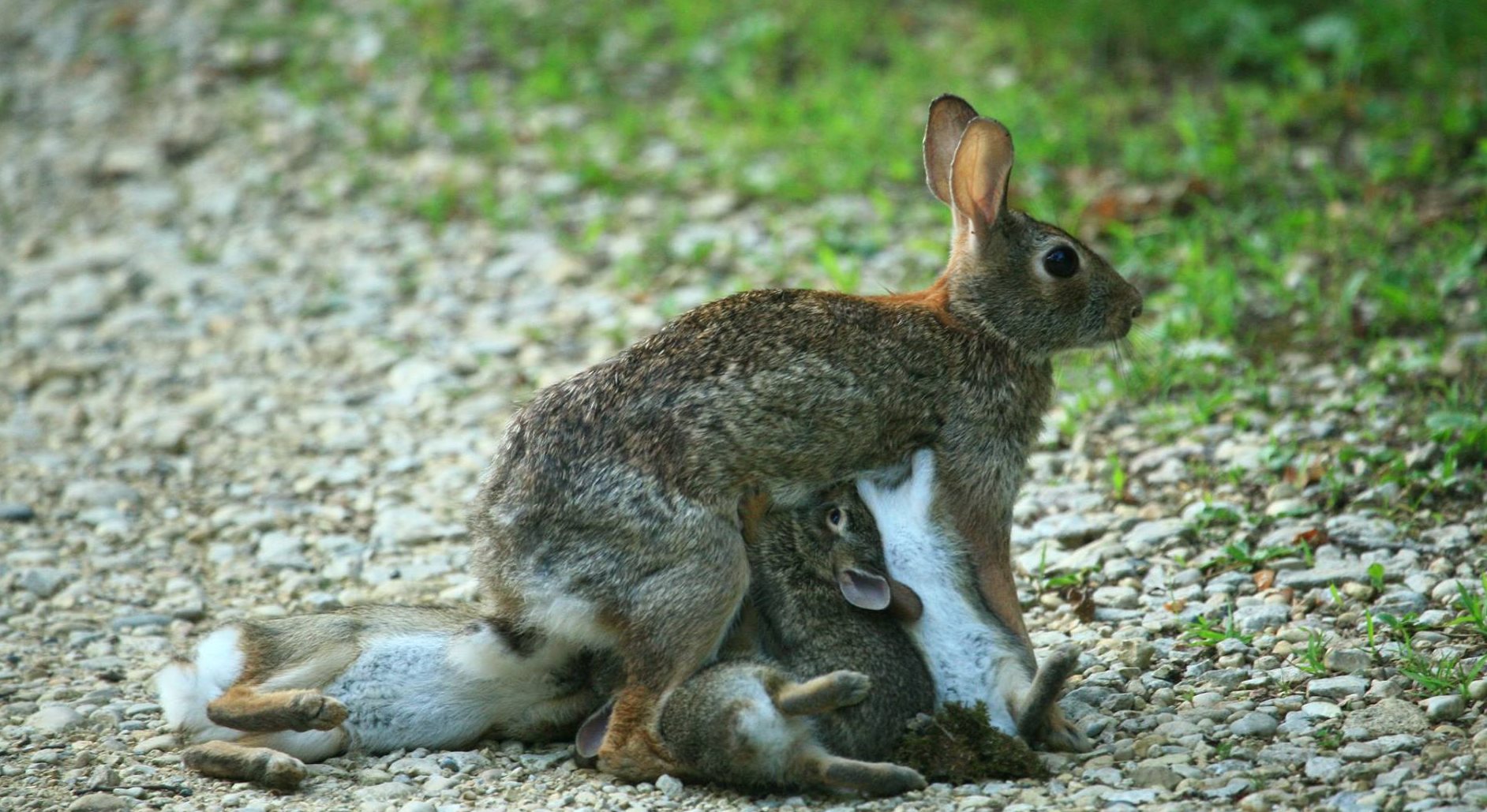
Cottontail rabbits do not leave their place especially females as they produce babies during. The average productionis three or four litters a yearwith four or five young per lit-ter.

As far as feeding habits go the eastern cottontail feeds primarily on grasses clovers flowering plants eg dandelion ragweed goldenrods and agricultural or garden crops in the summer.
Life cycle of eastern cottontail. Cottontails are a major prey animal for hawks snakes coyote and many other predators. For this reason most cottontails do not have a long lifespan. They have been known to live past the age of 10 in captivity but in the wild rarely live beyond 15 months.
5 factors determine eastern cottontail rabbits life cycle Food Supply. Cottontail rabbits are vegetarians and can eat grass to bark buds twigs clover plant dandelion prized. Cottontail rabbits do not leave their place especially females as they produce babies during.
Research conducted on eastern cottontails suggests that only about 25 percent of individuals survive for two years with the average lifespan about 15 months. Mortality rates and lifespans for New England cottontails are probably similar. The eastern cottontail mates between February and September.
The female builds a nest in a depression in the ground and lines it with soft materials and fur from her chest. The female gives birth about a month after mating. She has between one to nine babies although she usually will have four to five young.
The female feeds the young twice a day. The babies are weaned after about three weeks and leave the. Most breed for the first time in the spring following their birth.
In spite of the large number of young produced each year only a very few survive to breed. There are reports of marked wild individuals reaching 5 years of age and of a captive eastern cottontail still living at 9 years of age. The potential life is at least 10 years.
Life Span and Reproduction The average life span of an eastern cottontail in the wild is usually less than three years. In captivity though a cottontail rabbit can live up to eight years. Cottontails can reproduce by one year of age and a reproductively mature doe can have up to five litters of three to eight young in a single season.
The eastern cottontail is chunky citation needed red-brown or gray-brown in appearance with large hind feet long ears and a short fluffy white tail. Its underside fur is white. There is a rusty patch on the tail.
Its appearance differs from that of a hare in that it has a brownish-gray coloring around the head and neck. The body is lighter color with a white underside on the tail. As you may already know rabbits are birthing machines.
Males may be sexually mature at only one month of age and females within their first year. Eastern Cottontail breeding season is from about January through June with most young born in May and June. Mating and births occur a little later in the north and earlier in southern climates.
Although the cottontails home range may vary from one to sixty acres it is typically small averaging six to eight acres for males and two to three acres for females. Young rabbits may move two or three miles in an effort to find suitable habitat and once they find it they lead a fairly solitary life. Cottontail rabbits communicate by thumping their hind feet on the ground making various vocalizations and screaming at a high pitch if captured.
In the wild cottontail rabbits may live as long as three years but many perish much sooner. Cottontail rabbits are more active in the evening or at dawn. Cottontail rabbits do not hibernate.
The breeding season of Eastern Cottontail rabbits Sylvilagus floridanus begins in late February and lasts through September. A gestation period lasts 28 days with young born from. Cottontail rabbits are veryprolific.
The average productionis three or four litters a yearwith four or five young per lit-ter. However many of these donot survive. The number ofyoung that survive is largely afunction of habitat qualityespecially the availability offood and shelter within thishabitat.
Females typically mateagain soon after their young areborn. The number of times sherenests is dependent. You can identify the age of a baby cottontail rabbit by noting a few of its characteristics and behaviors.
A baby cottontail rabbit can sometimes be found alone without its mother in the wild. Mother cottontail rabbits leave the baby rabbits during the day and only return to feed them at night. Baby cottontail rabbits are extremely difficult to raise in captivity without the presence of their mothers.
If you find a baby cotton tail rabbit. How long do eastern cottontail rabbits live. They have average lifespan of about 15 months.
In the wild they do not survive for more than 2 years. According to researches there are only few of the rabbit species that can hardly live for more than 3 years. Most breed for the first time in the spring following their birth.
In spite of the large number of young produced each year only a very few survive to breed. There are reports of marked wild individuals reaching 5 years of age and of a captive eastern cottontail still living at 9 years of age. The potential life is at least 10 years.
The eastern cottontail has speckled brown-gray fur above reddish-brown fur around its neck and shoulders and lighter fur around its nose and on its undersides. It has big eyes and a tail that is puffy white on the underside. In the winter its fur may be more gray than brown.
There is another species of cottontail in New England the New England cottontail Sylvilagus transitionalis that. The lifespan of a cottontail averages about two years depending on the location. By the age of 4 to 5 weeks they are completely weaned and may leave the nest shortly thereafter.
As far as feeding habits go the eastern cottontail feeds primarily on grasses clovers flowering plants eg dandelion ragweed goldenrods and agricultural or garden crops in the summer.